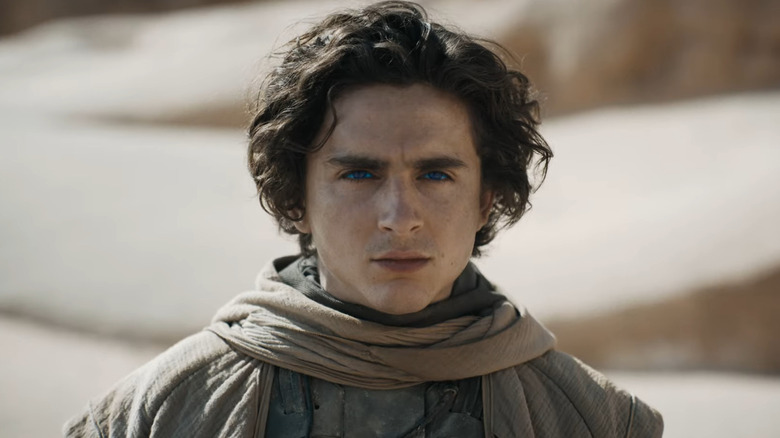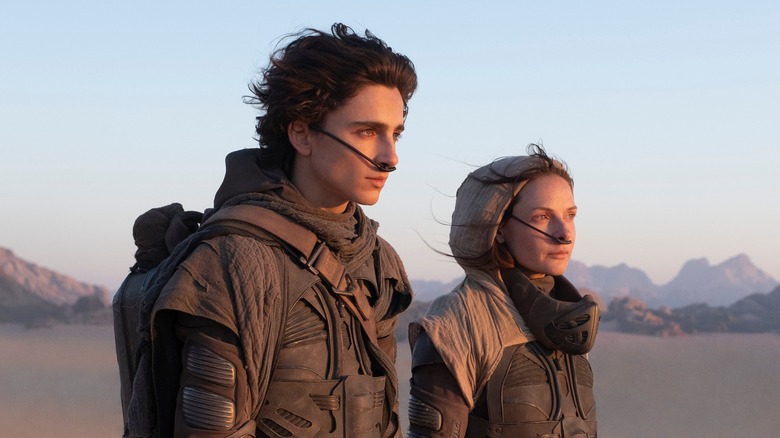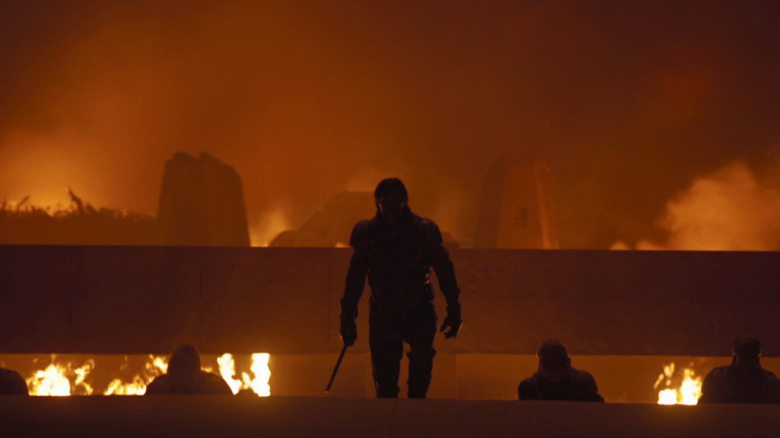Dune 2 Is Different From The First Movie In One Major Way
Sci-fi fans have every reason to expect Denis Villeneuve's highly anticipated "Dune: Part Two" to be as good as the first film. The second installment is right around the corner, as it's set to release on March 1, 2024 (after being pushed back from an original November release date due to the SAG-AFTRA strike. As it approaches, its esteemed director has clued viewers into the one major difference between the first and second movies. In an interview with Total Film, Villeneuve explained that "The second movie... it's more of an action film than the first part. It's more muscular."
This is no surprise if you think of the film as a completion of a single narrative spread across two movies rather than a story in and of itself. To put it another way, "Dune: Part Two" isn't a sequel. It is the second half of the first story. It picks up halfway through the first of Frank Herbert's books and completes what was, to all intents and purposes, an unresolved cliffhanger ending for the first film.
Dune: Part One was the first half of a multi-act story
When approached as the first half of a typical three-act story, "Dune: Part One" makes a lot more sense. It really only brings the audience through the first act and a half of the tale. The majority of the film serves as Act One (the setup). There is a lot of worldbuilding, which is fun in Frank Herbert's fictional world of Arrakis. A slew of characters are introduced, and some — like Oscar Isaac's Duke Leto Atreides — are even bumped off early.
Things progress into Act Two (the midpoint or confrontation) when Harkonnen forces invade Arrakis. The heroes of House Atriedes are either killed or flee, including Jessica (Rebecca Ferguson) and Paul (Timothée Chalamet), who end up in the desert, captured by the local Fremen. After earning their respect, they are taken in and Paul begins to realize the latent potential of this wild group of native inhabitants of the arid planet ... just in time for the story to abruptly end.
When "Part One" ends, the action is just beginning to build momentum, only for it to come to a screeching halt. In Villeneuve's own words, "The first movie was more meditative and contemplative. We were following a young man discovering a new planet, a new culture." Now that the stage is set, it's time to ramp things up.
Herbert's source material is heavy on the details and inner dialogue
It makes sense for the second half of the "Dune" story to be action-heavy. As the epic unfolds, there will doubtless be plenty of fighting, thrilling moments, and sandworms — lots of sandworms. The funny thing is, even though a more muscular second half is in store for cinematic audiences, the source material remains light on the action itself, even during the story's climax.
Don't get us wrong. Herbert's book is loaded with action-related concepts, and his Arrakis narrative has countless tense moments and plenty of bloodshed. The thing is, all of it is broken up, and there are plenty of parts that drag the story's momentum down. The inner dialogue (a lot of the book is in inner-thought italics) is particularly disruptive.
It will be fun to see a competent adaptation of the book skip harmlessly over these beats and provide us with a more seamless, action-packed experience. The Total Film interview even reports that all of the second movie was recorded on IMAX cameras (as opposed to 35-40% of the first one). Clearly, we're in for a treat, visually speaking.
The only concern now is that the movie avoids pulling a "The Hobbit: The Battle of the Five Armies" stunt. When Peter Jackson and company chose to divide "The Hobbit" into three parts, the final film ended up being little more than an overstretched string of battle sequences. Here's hoping that restricting "Dune's" fractionalized story to two parts rather than three avoids that issue.


